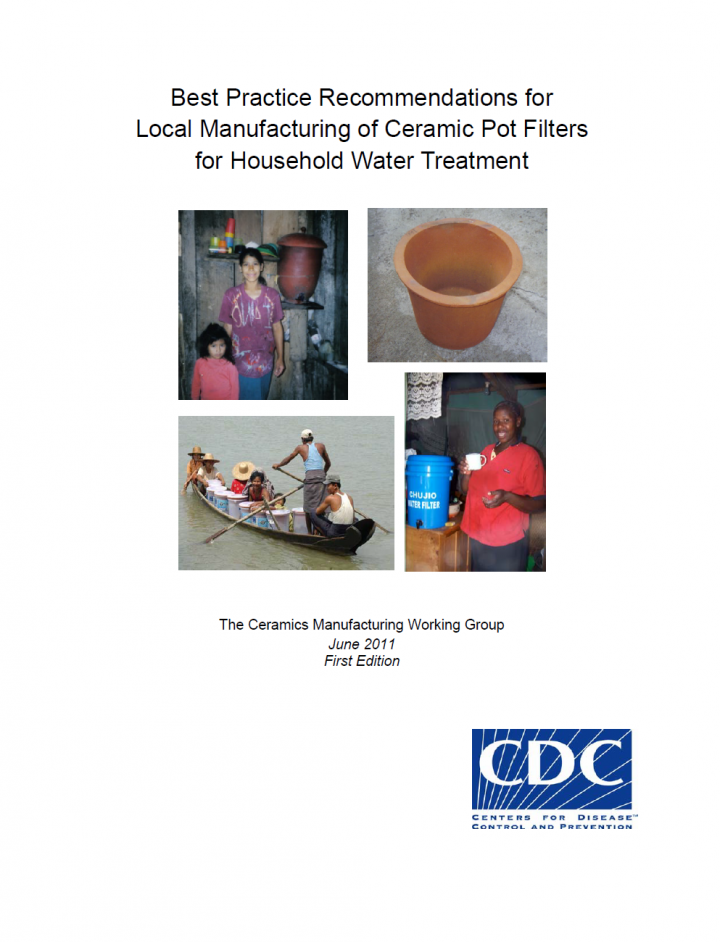Best Practice Recommendations for Local Manufacturing of Ceramic Pot Filters for Household Water Treatment First Edition The Ceramics Manufacturing Working Group (2011)
Ceramic filters have traditionally been used to treat household water in many countries, and are commonly available for purchase in both developed and developing countries. Currently, the most widely promoted household ceramic filters in the developing world are based on a design developed in Guatemala in 1981 by Dr. Fernando Mazariegos who, working with the Instituto Centro Americano de Tecnología Industrial (ICAITI), conceived of the idea of utilizing native artisan skills and traditional use of ceramic pots to design a ceramic water filter that would address the urgent need for access to potable water in rural Central American communities (AFA 1995). After two years of research and field trials, with funding from the Inter-American Development Bank, ceramic water filter units were developed. These filters met the objectives of being produced with local, freely available raw materials, at low cost, using earthenware pottery, and promoting local employment
Bibliographic information
The Ceramics Manufacturing Working Group (2011). Best Practice Recommendations for Local Manufacturing of Ceramic Pot Filters for Household Water Treatment First Edition CDC
Filter / Tags
OtherCase studies in other formatsEnglish
Downloads
Best Practice Recommendations for Local Manufacturing of Ceramic Pot Filters for Household Water Treatment
Type: application/pdf
Size: 2.82 MB

